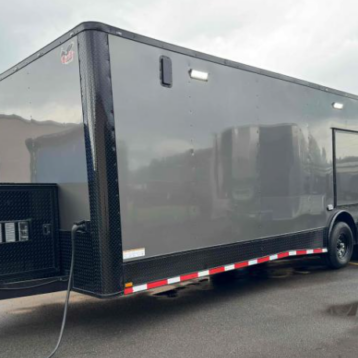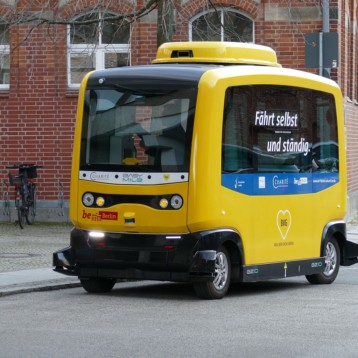Read the first column in the series: “Genesis of the Jet Age“
Jet engine development started in Germany in the mid 30s and enjoyed generous corporate support. As a result, Germany was the first country to fly a jet-propelled aircraft. However, jet engines were a technological novelty and their technology required many refinements in order to make them ready for field deployment. One of the main problems affecting jet engine development was the exposure of large parts of the engine to high temperatures and great rotational speeds. The compressor and turbine of jet engines were particularly complicated and delicate components operating under high physical forces. German developers faced more difficulties then their colleagues abroad, because the Reich’s Air Ministry decided in 1940 to concentrate R&D on a more advance form of engine – the axial-flow engine. On paper its design was quite straightforward, but in practice its developers were sailing largely through uncharted waters.
|
Two big firms lead the way in German jet engine development: Jumo and BMW. In the meantime the Reich’s Air Ministry contracted Messerschmitt to develop the Luftwaffe’s next generation jet fighter – the Me 262. BMW made faster progress and on March 25, 1942, a prototype Me 262 took off for the first time powered by two BMW P3302 development engines. The aircraft was also equipped with a single piston engine as a safety measure. It was a wise move because soon after take-off both jets failed. Major flows were found in the failed engines and BMW’s engineers were forced to redesign most of the engine. The next jet powered test flight took place on July 17 of the same year with two Jumo 004 engines. This flight was successful, but it was clear that much development work was still necessary.
|
The test flights conducted in 1942 demonstrated not only the potential of axial-flow engine, but also the immaturity of its technology. The Germans found out the hard way over the next couple of years that revolutionary technology cannot mature overnight, even with large investments and with the availability of highly developed testing facilities. Only in mid summer 1944 the Jumo 004B engine was finally ready for series production, and even then it was imperfect. BMW’s design, the 003 engine, took even longer to develop. Besides suffering from the same problems plaguing the Jumo engine, its fuel flow control was hopelessly ineffective. It was finally ready for production in late summer 1944, and only after its designers adopted the more successful Jumo throttle mechanism.
|
One interesting and often overlooked advantage jet engines offered Germany was simpler fuel logistics. German jets required no special fuel like piston engines, which required high-octane fuels. The Me 262 was even flown experimentally on crude Romanian oil, experiencing no meaningful problems.
- The Germans tried to rush jet technology into service, but by concentrating their efforts from an early stage on the axial-flow design they skipped an important evolutionary stage. Huge investments in axial-flow engine R&D could not overcome all the technical difficulties involved in its development. Money could not buy, for example, the special metals required for the heat-resistant parts. The British started investing large amounts of money in Whittle’s project only in 1940. It helped them close the gap with the Germans only because their engine was less complicated. As a result, at the end of WWII British jet engines were less modern, but more reliable, while German engines were more advanced, but less reliable.
- Over-optimism regarding the quick maturing of advance technologies is a striking feature of German WWII leadership. It is especially evident in the jet story. For instance, in 1940 the Air Ministry planned to introduce a jet fighter into operational service by the end of 1942. It was a ridiculous notion as any aeronautical engineer at the time knew well it will take between two and three years to complete the development of a conventional fighter not to mention a revolutionary new type of aircraft.
- Kay, Anthony L., German Jet Engine and Gas Turbine Development 1930-1945, Shrewsbury: Airlife, 2002.
- Ethell, Jeffrey & Price, Alfred, World War II Fighting Jets, Annapolis: Naval Institute, 1996.
- Nahum, Andrew, Frank Whittle: Invention of the Jet., London: Icon Books Ltd, 2004.
- Neufeld, Michael J., ”Rocket Aircraft and the ‘Turbojet Revolution’. The Luftwaffe’s Quest for High-Speed Flight, 1935-1939”, in Launius, Roger D., Innovation and the Development of Flight, College Station: Texas A+M, 1999.
- Price, Alfred, The Last Year of the Luftwaffe, May 1944 to May 1945, London: Arms and Armour, 1991.
- Schabel, Ralf, Die Illusion der Wunderwaffen: die Rolle der Düsenflugzeuge und Flugabwehrraketen in der Rüstungspolitik des Dritten Reiches, München: Oldenbourg, 1994.
- Smith, Richard J. & Creek, Eddie J., Jet Planes of the Third Reich, Boylston: Monogram, 1982.
- Gloster E28/39 – 60th Anniversary
- Gloster Meteor Story (6 part film on Youtube)
- A Tribute to a Cambridge Engineering Student who has Achieved World Fame.
About the author: Dr. Daniel Uziel researches different aspects of modern German history, military history, and war and media. In recent years he is researching the history of the German aviation industry. He conducted part of this research as a fellow at the US National Air & Space Museum.













